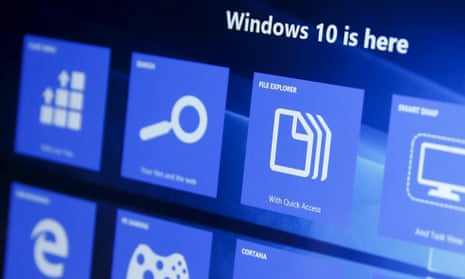Microsoft has admitted that it is automatically downloading Windows 10 on to user machines even when they have expressed no interest in installing the new operating system.
As discovered by an Inquirer reader, the automatic download takes up between 3.5GB and 6GB of storage on the user’s computer. Some recent Windows computers, including new form-factors such as Windows tablets, have only a small amount of storage as little as 32GB, making the download potentially up to 19% of the total hard drive space.
The download happens in the background unbeknown to the user. If the user is on a slow internet connection as many are in rural and poorly connected areas it could severely impact other time-critical activities. It could also take up a significant chunk of a metered internet connection, which can provide as little as 40GB of downloads per month.
User reports indicate the Windows 10 download is occurs on Windows 7, 8 and 8.1 computers with automatic updates turned on. Automatic updates are a good idea, as they install much needed bug fixes and security updates when they are released.
But Windows 10 is neither a bug fix nor a security update; it is a whole new version of the Windows operating system.
Microsoft said in a statement: “For individuals who have chosen to receive automatic updates through Windows Update, we help upgradable devices get ready for Windows 10 by downloading the files they’ll need if they decide to upgrade.”
Do you want to install Windows 10 now?
Windows 10 will not install until the user accepts a prompt to do so, which means that it will sit on the user’s hard drive taking up space even if they have no intension of ever upgrading.
It can also led to a prompt to install Windows 10 every time the computer is rebooted to install, according to one Inquirer reader.
Microsoft: “When the upgrade is ready, the customer will be prompted to install Windows 10 on the device.”
According to data from web analytics firm StatCounter, Windows 10 accounted for 4.9% of desktop internet users in August. Windows 7 held a 48.1% share, for comparison, but the number of Window 10 user is already greater than those who upgraded to Windows 7 and Windows 8 after the first complete month of release.
Microsoft’s pre-caching of Windows 10 on user machines could account for some of that success.
Windows 10 review – final version of Windows might be Microsoft’s best ever

Comments (…)
Sign in or create your Guardian account to join the discussion